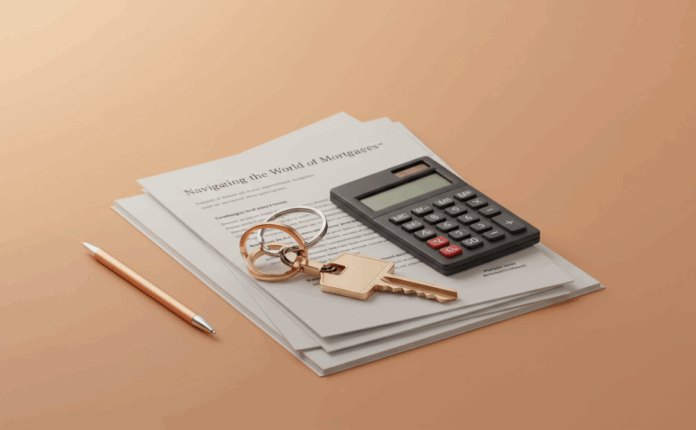Paying off a mortgage is a significant financial commitment, and homeowners are always on the lookout for strategies to save money and reduce the burden of their loan. One popular approach is making biweekly mortgage payments instead of the traditional monthly ones. But is this strategy worth it? In this article, we’ll dive into the concept of biweekly mortgage payments, explore their benefits and drawbacks, and help you decide if this payment method aligns with your financial goals. Let’s break it down and see if paying your mortgage biweekly is the smart move for you.
What Are Biweekly Mortgage Payments?
Understanding the Basics
A biweekly mortgage payment plan involves making half of your monthly mortgage payment every two weeks. Since there are 52 weeks in a year, this results in 26 half-payments, equivalent to 13 full monthly payments annually instead of the usual 12. This extra payment can reduce the principal faster, potentially shortening the loan term and saving on interest over time.
How It Differs from Monthly Payments
Unlike the standard monthly payment schedule, where you pay once every 30–31 days, biweekly payments align with standard payroll cycles, which may make budgeting easier for some homeowners. The key difference lies in that extra annual payment, which can have a compounding effect on the reduction of your loan’s principal.
Benefits of Paying Your Mortgage Biweekly
Faster Loan Payoff
One of the most significant advantages of biweekly payments is the potential to pay off your mortgage sooner. By making an extra full payment each year, you reduce the principal balance more quickly, which in turn shortens the loan term. For example, on a 30-year, $300,000 mortgage with a 4% interest rate, switching to biweekly payments could shave off several years and save tens of thousands in interest.
Interest Savings Over Time
Since interest is calculated on the remaining principal, reducing the principal faster with biweekly payments means less interest accrues over the life of the loan. This can lead to substantial savings, especially for those early in their mortgage term when interest makes up a larger portion of each payment.
Budgeting Alignment
For many, getting paid every two weeks is standard. Aligning mortgage payments with your paycheck can simplify budgeting, ensuring you’re not caught off guard by a large monthly payment. This consistent schedule can help you stay disciplined and avoid missed payments.
Potential Drawbacks to Consider
Limited Financial Flexibility
Committing to biweekly payments may strain your cash flow, especially if unexpected expenses arise. Since you’re effectively paying more each year, you’ll have less disposable income for other financial goals, like saving for retirement or building an emergency fund.
Lender Restrictions or Fees
Not all lenders offer biweekly payment plans, and some may charge fees to set one up or convert your existing mortgage. Additionally, some lenders may not apply the extra payments directly to the principal unless explicitly instructed, which could reduce the financial benefits.
Opportunity Cost of Extra Payments
The money used for extra mortgage payments could be invested elsewhere, potentially yielding higher returns. For instance, if your mortgage interest rate is low (say, 3%), investing in a diversified portfolio with an average return of 7% might be more lucrative in the long run.
How to Set Up Biweekly Mortgage Payments
Check with Your Lender
Before switching to a biweekly schedule, contact your lender to confirm they support this option. Some lenders offer formal biweekly payment programs, while others may allow you to make additional principal payments manually. Be sure to clarify how payments are applied and whether any fees are associated with them.
DIY Biweekly Payments
If your lender doesn’t offer a formal biweekly plan, you can mimic the strategy by dividing your monthly payment in half and sending it every two weeks. Alternatively, you can make one extra payment annually or add an extra amount to your monthly payment to achieve similar results. Always specify that any additional fees are applied to the principal.
Automate for Convenience
Setting up automatic biweekly payments through your bank or lender can streamline the process and ensure you don’t miss a payment. Automation also helps maintain discipline, making it easier to stick to your plan.
Is Biweekly Payment Right for You?
Assessing Your Financial Situation
Biweekly payments are most suitable for homeowners with stable incomes and predictable budgets. If you have high-interest debt (like credit card balances) or lack an emergency fund, it may be wiser to prioritize those before accelerating your mortgage payoff.
Comparing Long-Term Goals
Consider your broader financial objectives. If your goal is to be debt-free as soon as possible, biweekly payments can be a powerful tool for achieving this. However, if you’re focused on building wealth through investments or saving for significant life events, redirecting extra funds elsewhere may be a more strategic approach.
Using Mortgage Calculators
Online mortgage calculators can help you estimate the impact of biweekly payments on your loan term and interest savings. Plug in your loan amount, interest rate, and term to see how much you could save and whether the trade-offs align with your goals.
Common Misconceptions About Biweekly Payments
“It’s the Same as Making Extra Payments”
While biweekly payments result in an extra annual fee, they’re not identical to making sporadic extra payments. The structured nature of biweekly payments ensures consistency, which can be more effective than irregular contributions.
“All Lenders Apply Payments the Same Way”

Not all lenders automatically apply extra payments to the principal. Some may hold payments in escrow or use them for future interest unless you specify otherwise. Always confirm with your lender to maximize the benefits.
Real-World Example: Biweekly vs. Monthly Payments
Let’s consider a $250,000, 30-year mortgage with a 3.5% interest rate. With monthly payments, you’d pay approximately $1,123 per month, totaling $404,280 over the loan term, with $154,280 in interest. Switching to biweekly payments of $561.50 every two weeks results in 26 payments per year, equivalent to 13 payments per month. This could reduce the loan term to about 25 years and save roughly $25,000 in interest, assuming no fees and proper principal application.
FAQ
Is it worth paying my mortgage biweekly?
It depends on your financial goals and situation. Biweekly payments can save on interest and shorten your loan term, but they reduce financial flexibility. Compare the savings to potential investment returns and prioritize high-interest debt first.
Do all lenders allow biweekly payments?
Not all lenders offer formal biweekly payment plans, and some may charge fees. Contact your lender to confirm their policies and ensure extra payments are applied to the principal.
Can I set up biweekly payments myself?
Yes, you can manually send half your monthly payment every two weeks or make one extra payment annually. Specify that any additional fees are applied to the principal to maximize savings.
How much can I save with biweekly payments?
Savings vary based on your loan amount, interest rate, and term. For a $300,000, 30-year mortgage at 4%, you could save $30,000 to $40,000 in interest and shave 4 to 5 years off the loan.
Are there alternatives to biweekly payments?
Yes, making extra principal payments monthly or annually can achieve similar results. You could also refinance to a shorter-term loan, though this may increase monthly fees.



